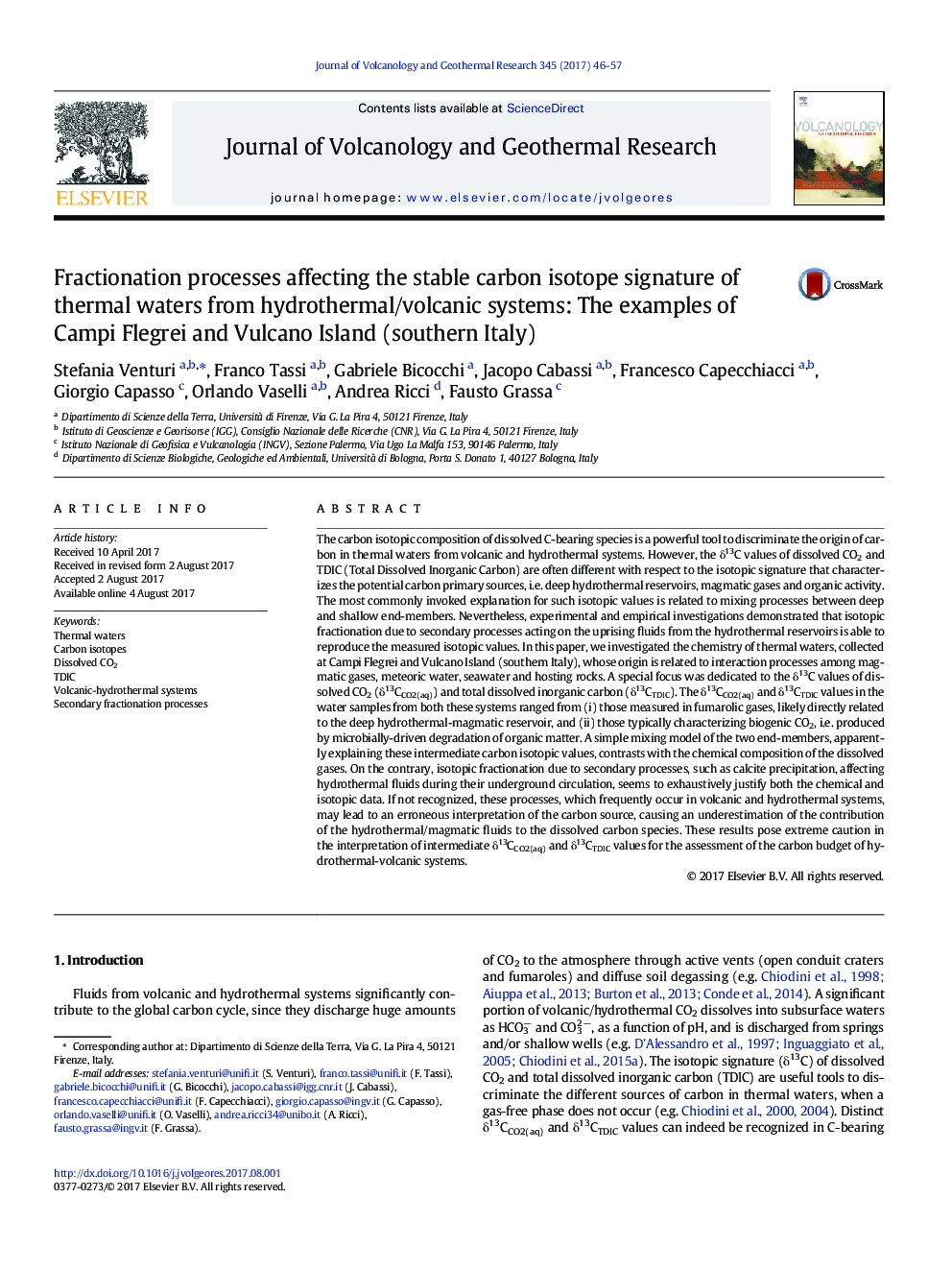| کد مقاله | کد نشریه | سال انتشار | مقاله انگلیسی | نسخه تمام متن |
|---|---|---|---|---|
| 5783644 | 1638278 | 2017 | 12 صفحه PDF | دانلود رایگان |

- Natural waters from Campi Flegrei and Vulcano Island were analyzed.
- δ13CCO2(aq) and δ13CTDIC ranged between hydrothermal and biogenic end-members.
- Gas chemical composition excluded mixing between hydrothermal and shallow waters.
- The isotopic signature of hydrothermal fluids was affected by secondary processes.
- These processes may strongly affect the hydrothermal/magmatic CO2 budget estimates.
The carbon isotopic composition of dissolved C-bearing species is a powerful tool to discriminate the origin of carbon in thermal waters from volcanic and hydrothermal systems. However, the δ13C values of dissolved CO2 and TDIC (Total Dissolved Inorganic Carbon) are often different with respect to the isotopic signature that characterizes the potential carbon primary sources, i.e. deep hydrothermal reservoirs, magmatic gases and organic activity. The most commonly invoked explanation for such isotopic values is related to mixing processes between deep and shallow end-members. Nevertheless, experimental and empirical investigations demonstrated that isotopic fractionation due to secondary processes acting on the uprising fluids from the hydrothermal reservoirs is able to reproduce the measured isotopic values. In this paper, we investigated the chemistry of thermal waters, collected at Campi Flegrei and Vulcano Island (southern Italy), whose origin is related to interaction processes among magmatic gases, meteoric water, seawater and hosting rocks. A special focus was dedicated to the δ13C values of dissolved CO2 (δ13CCO2(aq)) and total dissolved inorganic carbon (δ13CTDIC). The δ13CCO2(aq) and δ13CTDIC values in the water samples from both these systems ranged from (i) those measured in fumarolic gases, likely directly related to the deep hydrothermal-magmatic reservoir, and (ii) those typically characterizing biogenic CO2, i.e. produced by microbially-driven degradation of organic matter. A simple mixing model of the two end-members, apparently explaining these intermediate carbon isotopic values, contrasts with the chemical composition of the dissolved gases. On the contrary, isotopic fractionation due to secondary processes, such as calcite precipitation, affecting hydrothermal fluids during their underground circulation, seems to exhaustively justify both the chemical and isotopic data. If not recognized, these processes, which frequently occur in volcanic and hydrothermal systems, may lead to an erroneous interpretation of the carbon source, causing an underestimation of the contribution of the hydrothermal/magmatic fluids to the dissolved carbon species. These results pose extreme caution in the interpretation of intermediate δ13CCO2(aq) and δ13CTDIC values for the assessment of the carbon budget of hydrothermal-volcanic systems.
Journal: Journal of Volcanology and Geothermal Research - Volume 345, 1 October 2017, Pages 46-57